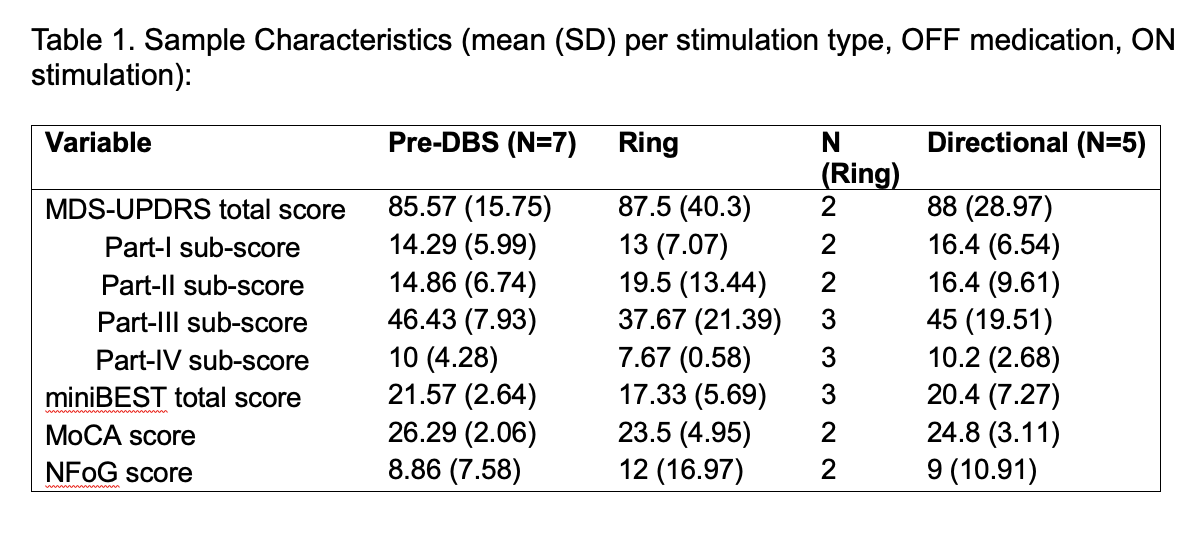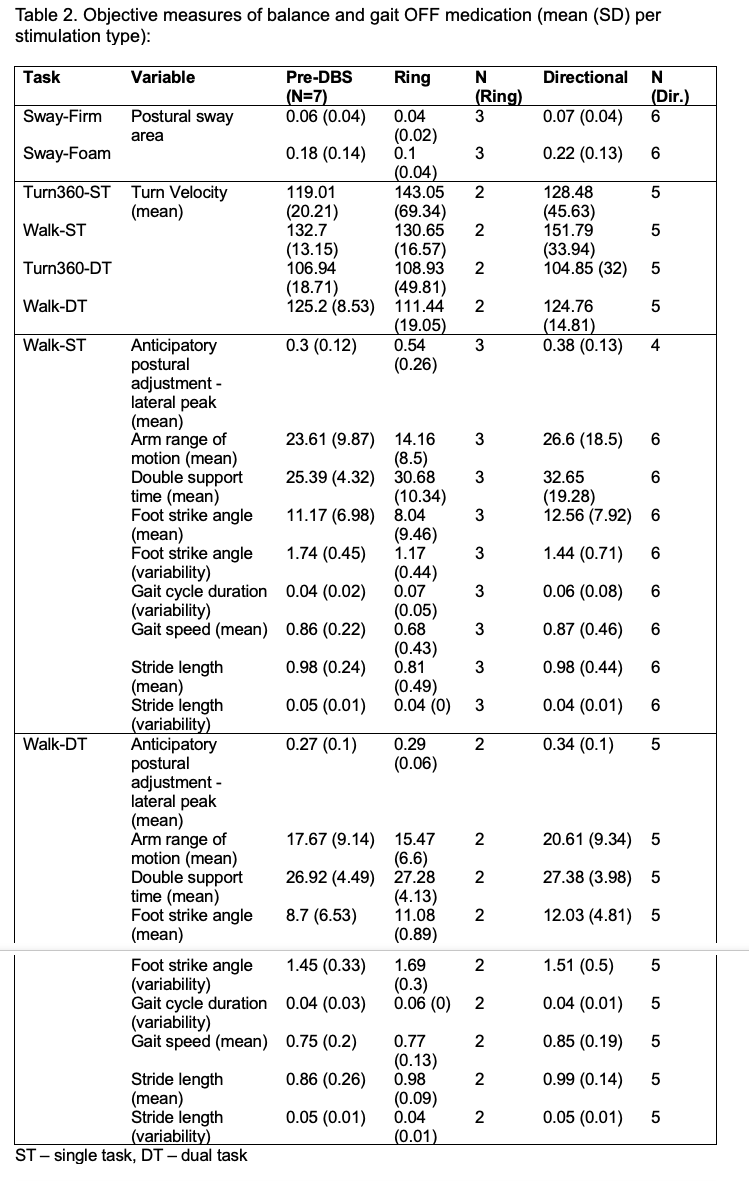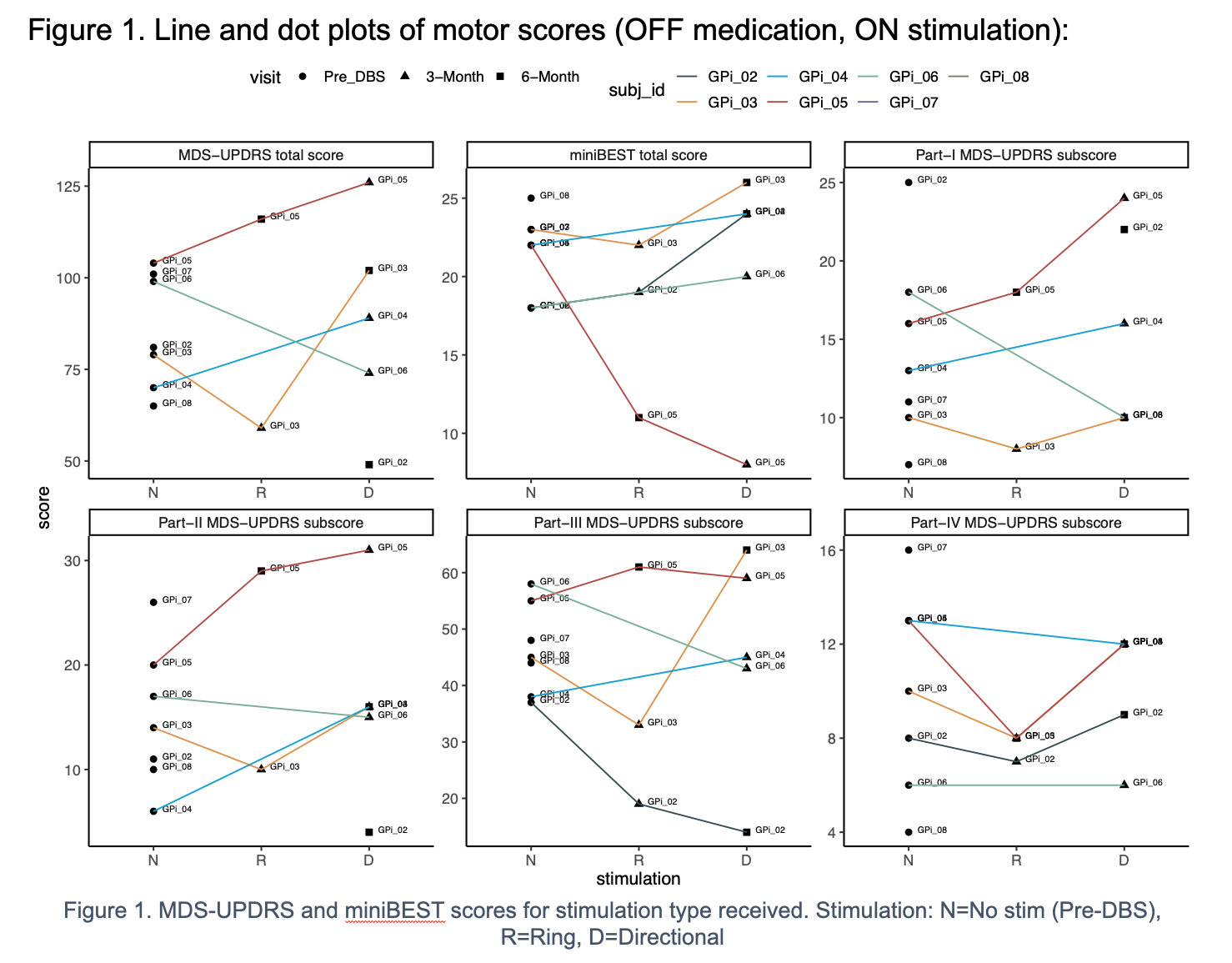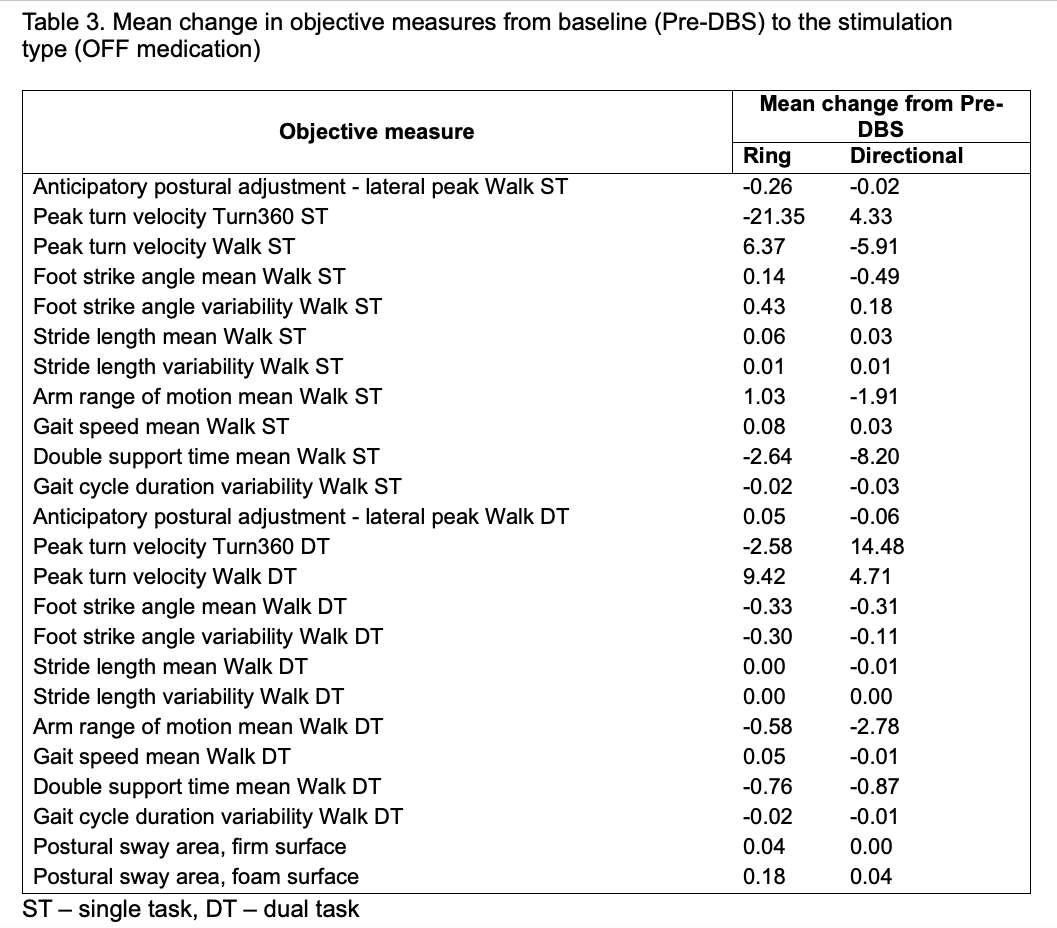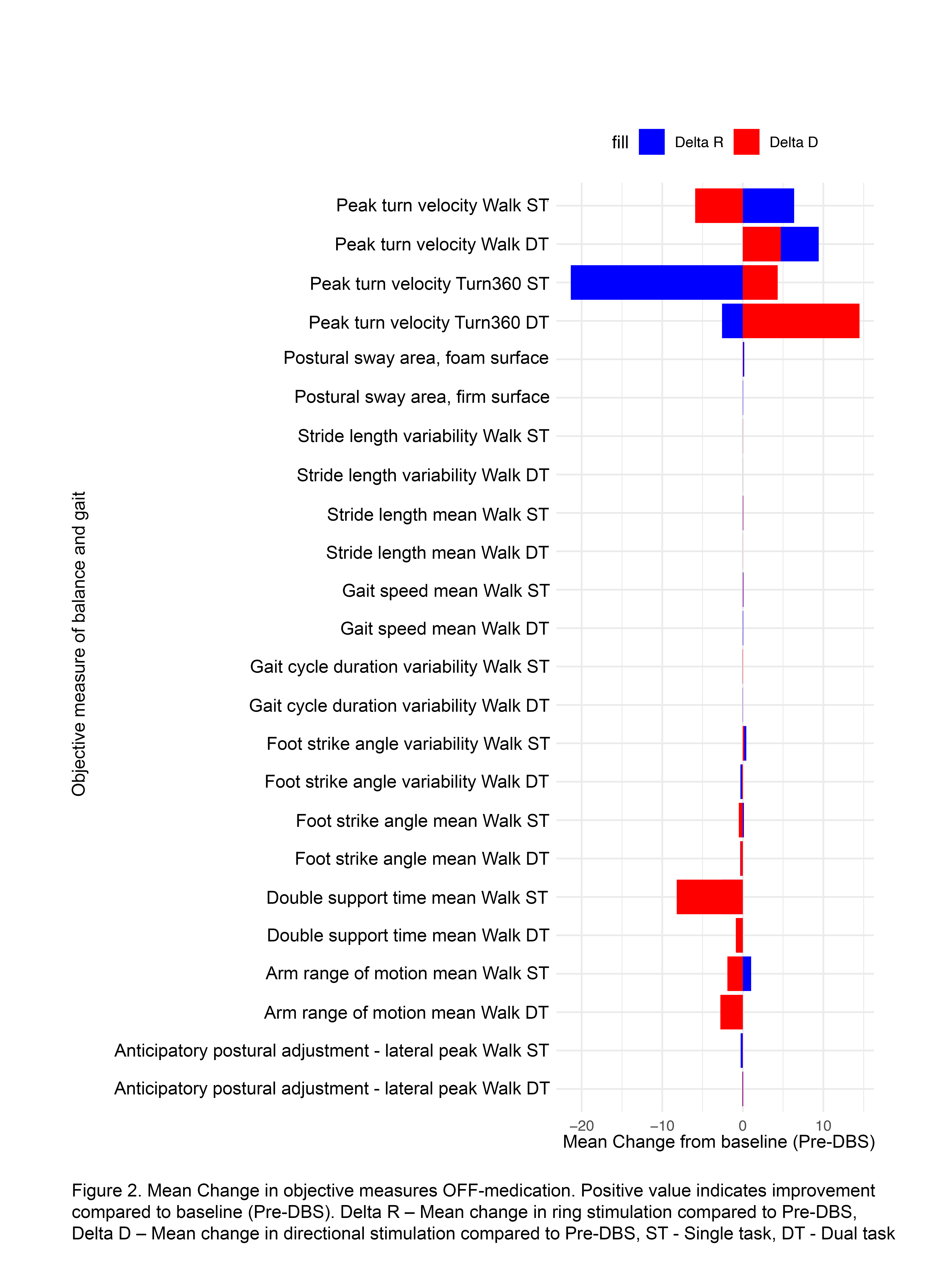Category: Parkinson’s Disease: Clinical Trials
Objective: This study aims to assess the possible benefits of directional stimulation for motor symptoms in Parkinson’s disease (PD) by comparing therapeutic directional versus ring stimulation effects on clinical motor outcomes, speech and objective balance and gait measures in people with PD undergoing GP-DBS. We also explore the utility of novel brain sensing technology in objectively verifying optimal therapeutic stimulation.
Background: Effects of high-frequency GP stimulation vary based on targeting external/internal/lamina and dorsal/ventral regions. Stimulating ventral GPi may worsen akinesia but improve levodopa-induced dyskinesia, while GPe stimulation may alleviate akinesia and tremor, but induce dyskinesia [1]. Activation of inhibitory fibers from the striatum or to the GPi may improve PD symptoms with GPe stimulation [2]. Conversely, unintended activation of the corticospinal tract may worsen akinesia with ventral/posterior GPi stimulation [3]. In a cross-over randomized clinical trial, we assess if directional stimulation enhances PD symptoms more than ring stimulation.
Method: Ten PD patients will be randomly assigned ring or directional stimulation 1-month after lead placement, based on optimal contact for bradykinesia and rigidity. A novel DBS device sensing will record local field potential (LFP) signals’ alignment with therapeutic electrodes. At 3-months, patients will switch stimulation and after 6-months will continue with the most effective program. Pre-implantation, and at 3- and 6-month intervals post bilateral GP-DBS placement, OFF-medication motor and speech assessments will be conducted.
Results: In this ongoing project, 7 subjects have completed pre-DBS assessments, with 5 at 3-months post-DBS (1 dropout), and 3 at 6-months post-DBS. Clinical characteristics are in Table 1 [table1]; balance and gait measures in Table 2 [table2]. The LFP signals correlated with the therapeutic electrodes in 79% of the hemispheres. MDS-UPDRS III scores improved in directional compared to ring in 2/3 subjects who completed the trial [figure1]. Turn velocity and double support time improved better in directional compared to ring compared to Pre-DBS [table3] [figure2].
Conclusion: Current objective gait data suggest directional stimulation improves turning and gait outcomes over ring stimulation. Brain sensing could offer bio-feedback for contact selection, crucial for complex directional stimulation programming.
Sample Motor Characteristics
Objective Measures of Balance and Gait (Mean-SD)
Line and Dotplots of Motor Scores
Mean Change in Objective Measures
Barplot of Mean Change in Objective Measures
References: [1] Krack P, Pollak P, Limousin P, et al. Opposite motor effects of pallidal stimulation in Parkinson’s disease. Annals of neurology 1998; 43(2): 180-92.
[2] Vitek JL, Hashimoto T, Peoples J, DeLong MR, Bakay RAE. Acute stimulation in the external segment of the globus pallidus improves parkinsonian motor signs. Movement Disorders 2004; 19(8): 907-15.
[3] Ashby P, Strafella A, Dostrovsky JO, Lozano A, Lang AE. Immediate motor effects of stimulation through electrodes implanted in the human globus pallidus. Stereotact Funct Neurosurg 1998; 70(1): 1-18.
To cite this abstract in AMA style:
A. Ragothaman, Z. Nhem, G. Harker, P. Carlson-Kuhta, L. Neilson, C. Zarns, M. Case, A. Becker, R. Raike, K. Burchiel, M. Mancini, D. Safarpour. Comparing Ring and Directional Globus Pallidus Stimulation Effects on Parkinson’s Gait [abstract]. Mov Disord. 2024; 39 (suppl 1). https://www.mdsabstracts.org/abstract/comparing-ring-and-directional-globus-pallidus-stimulation-effects-on-parkinsons-gait/. Accessed January 5, 2026.« Back to 2024 International Congress
MDS Abstracts - https://www.mdsabstracts.org/abstract/comparing-ring-and-directional-globus-pallidus-stimulation-effects-on-parkinsons-gait/

